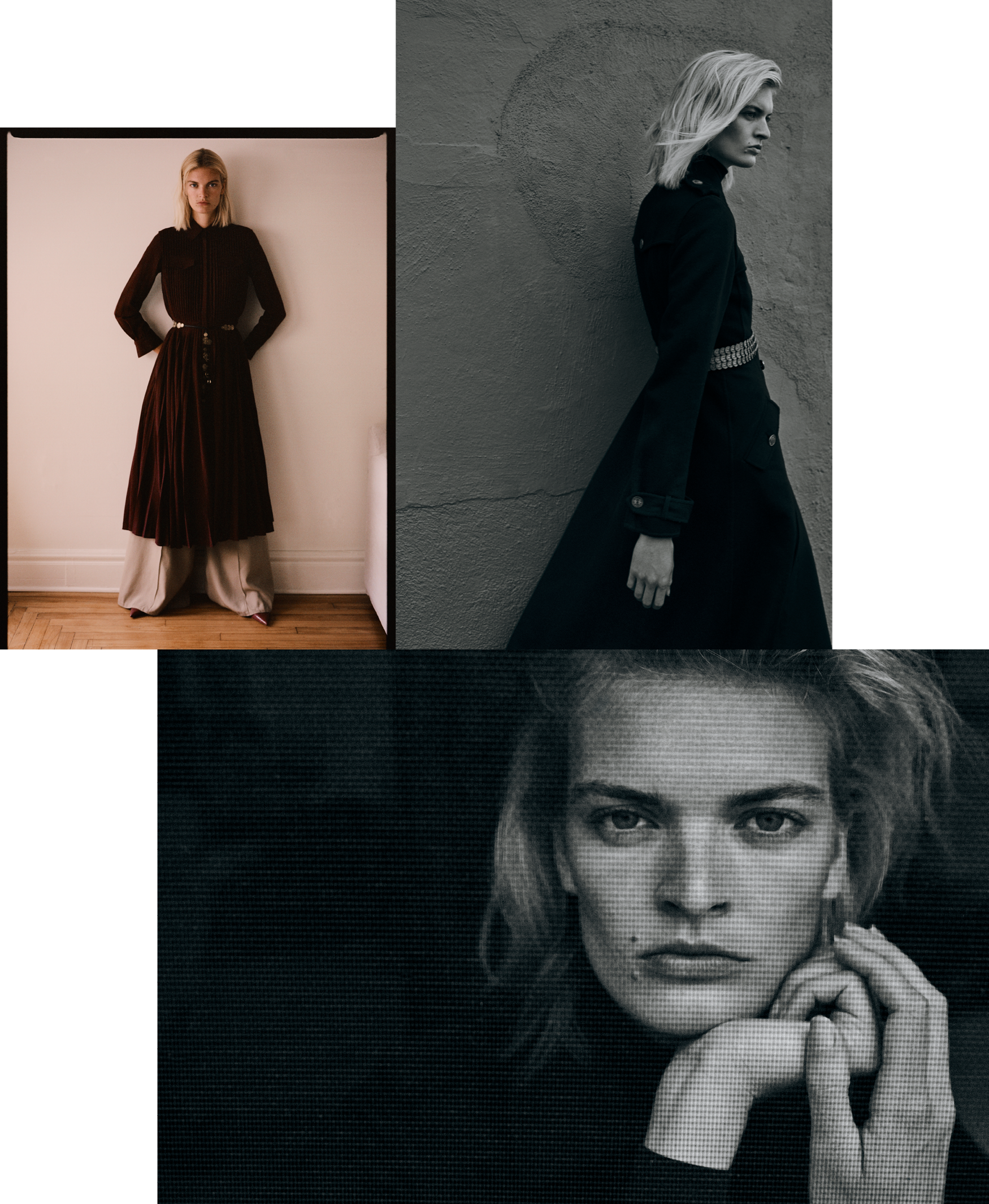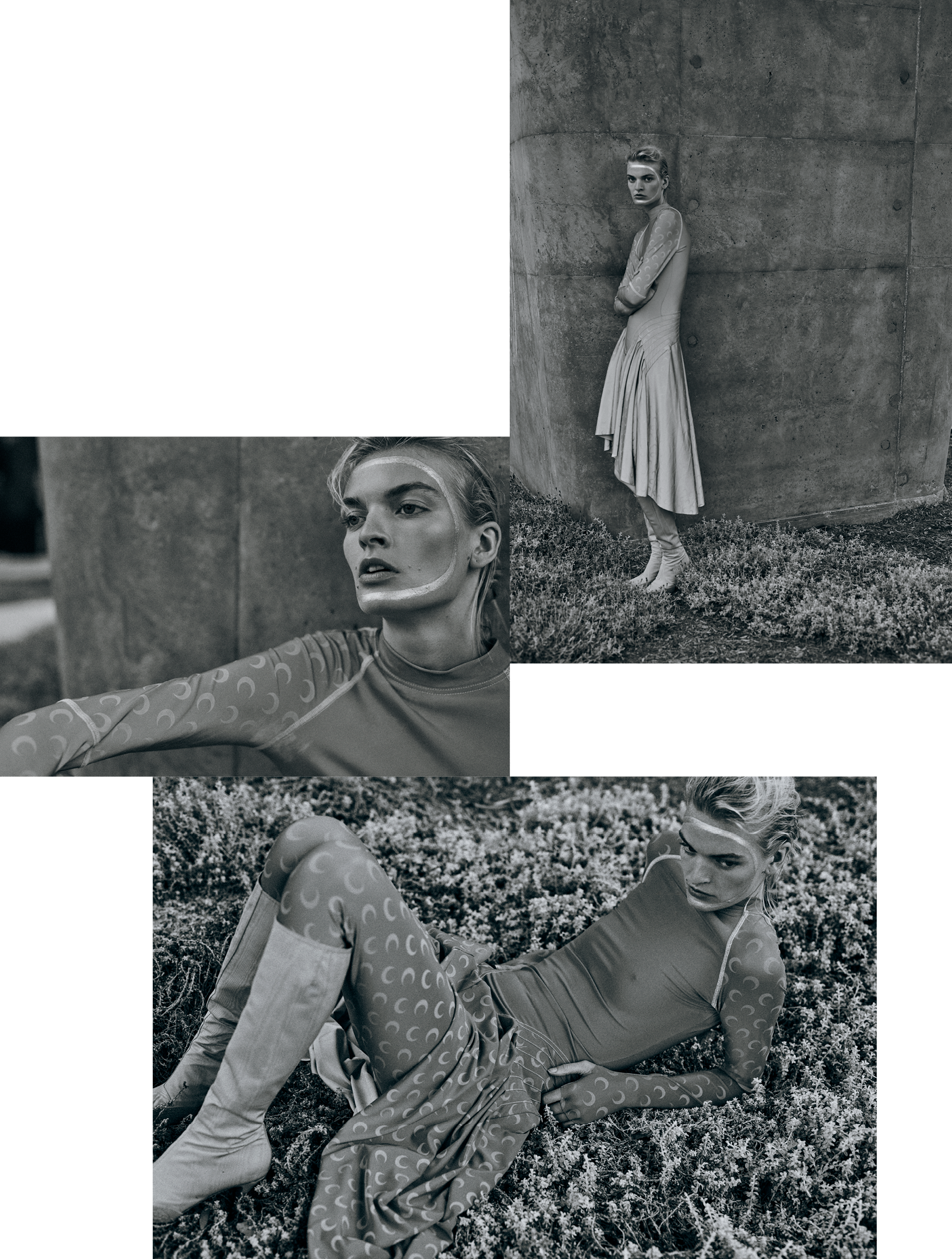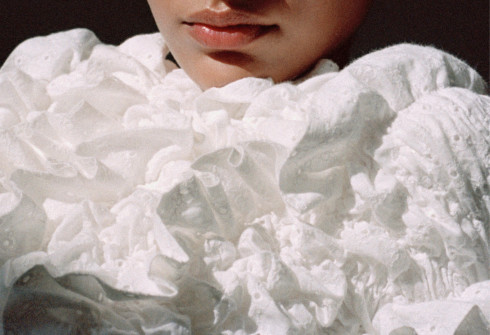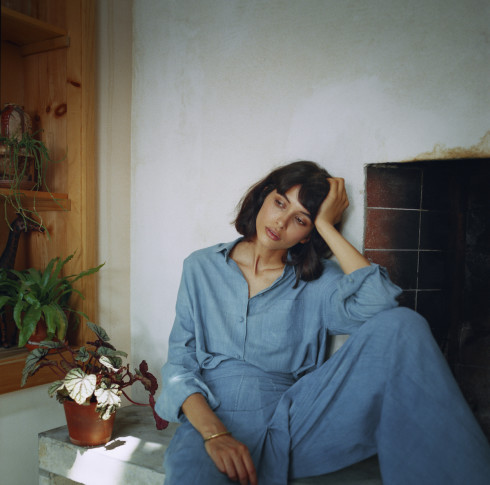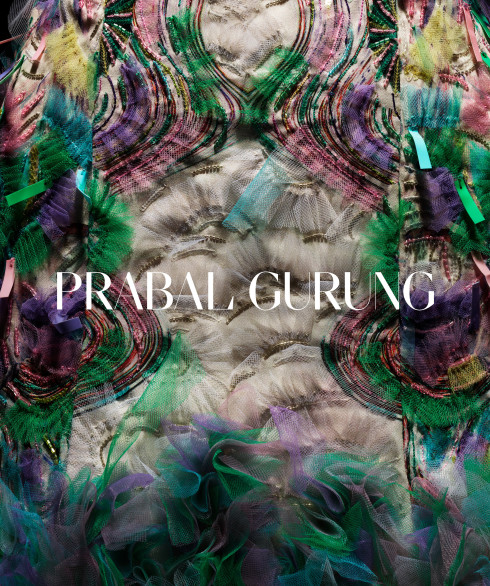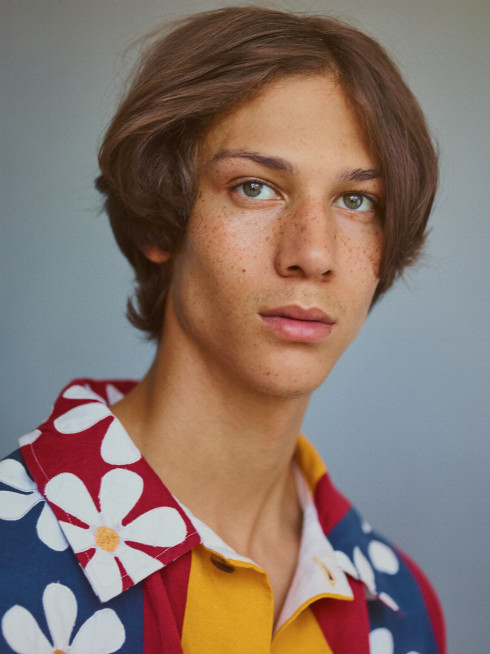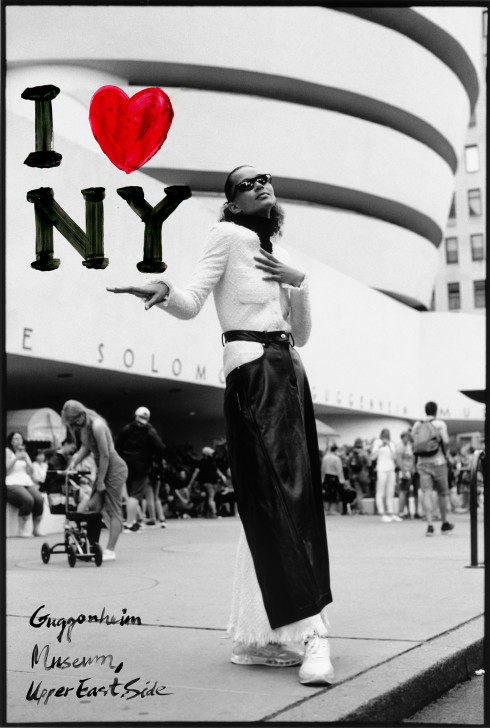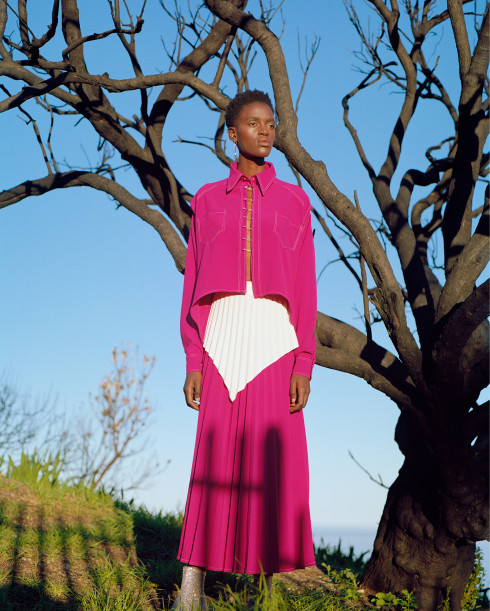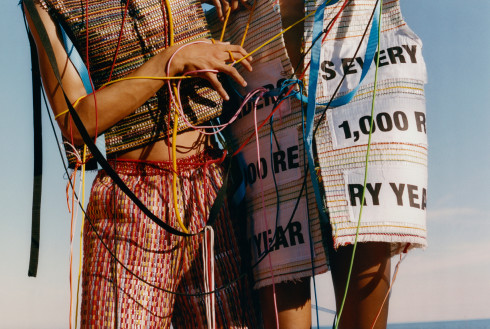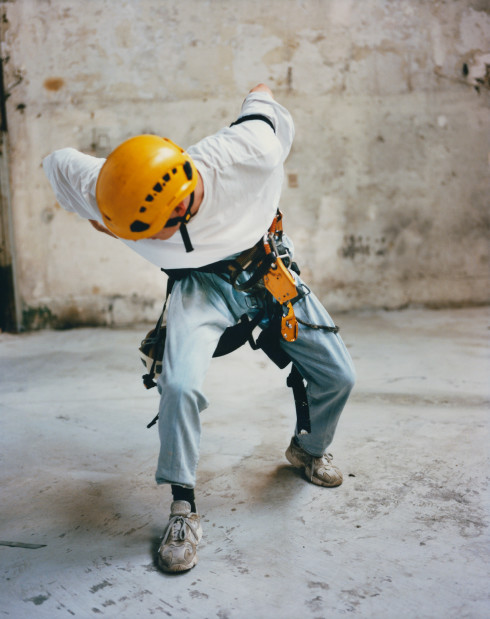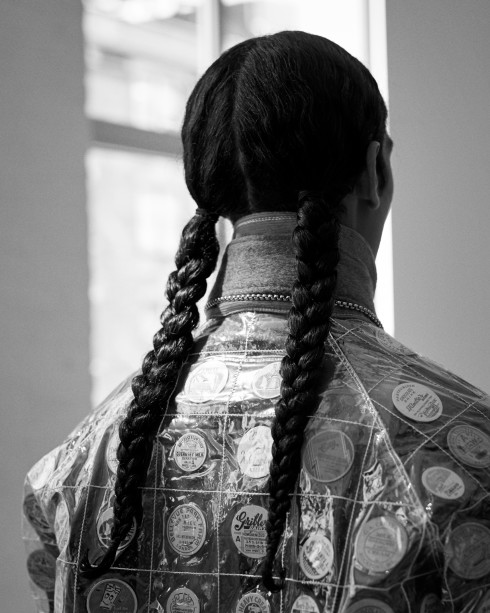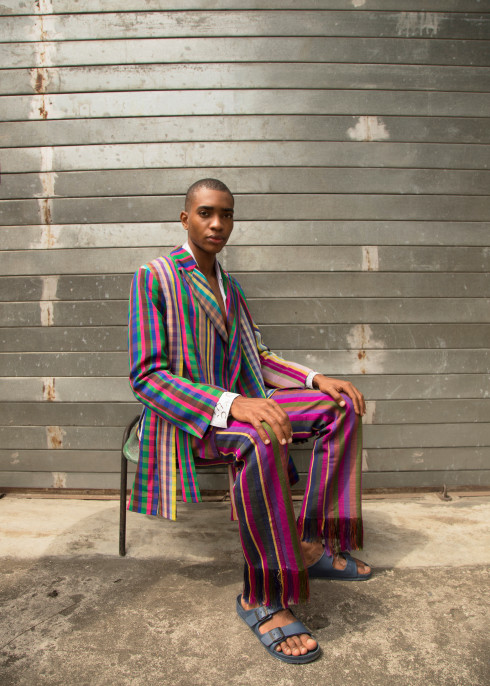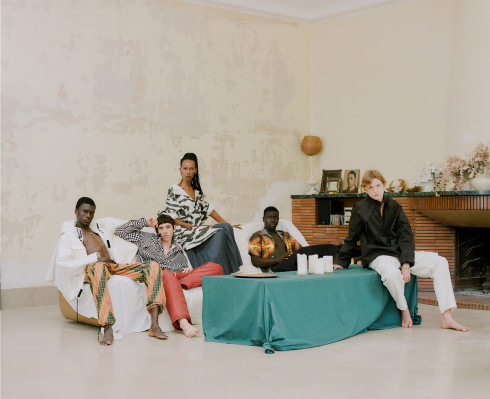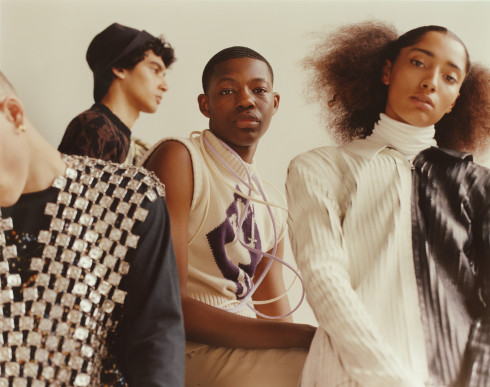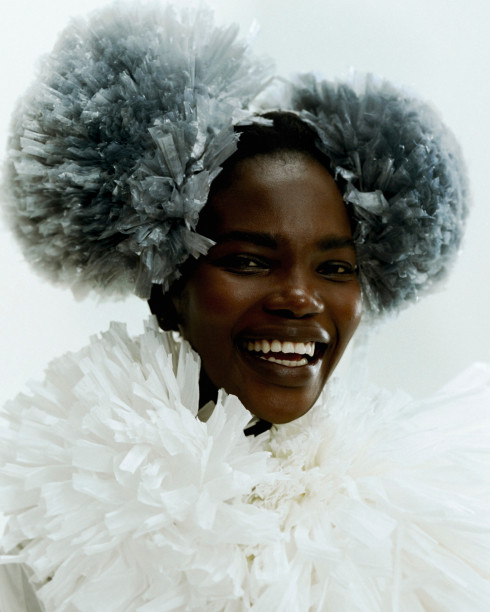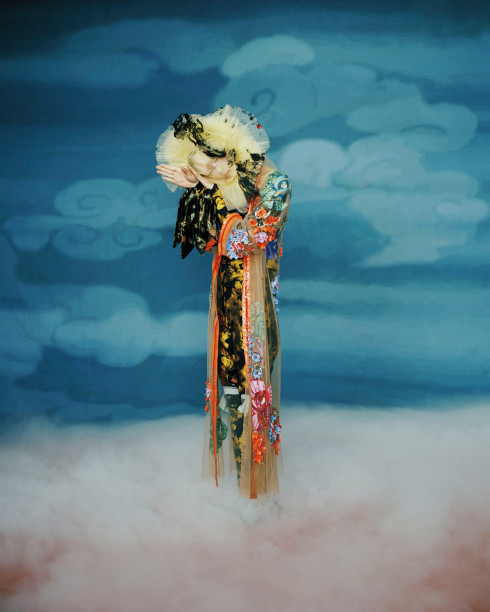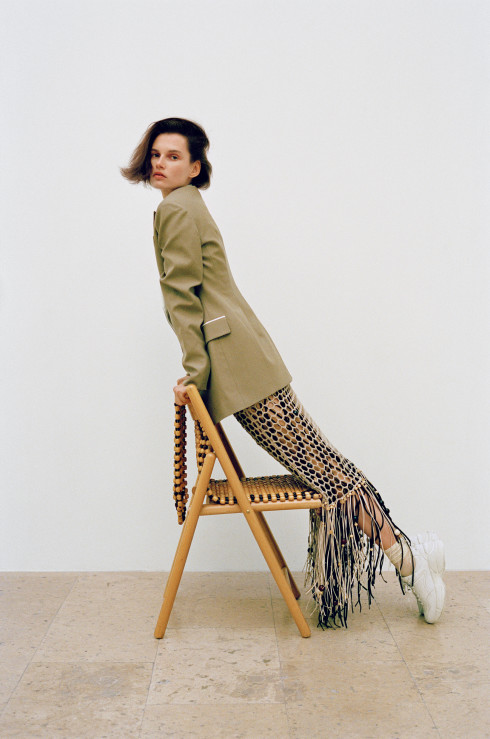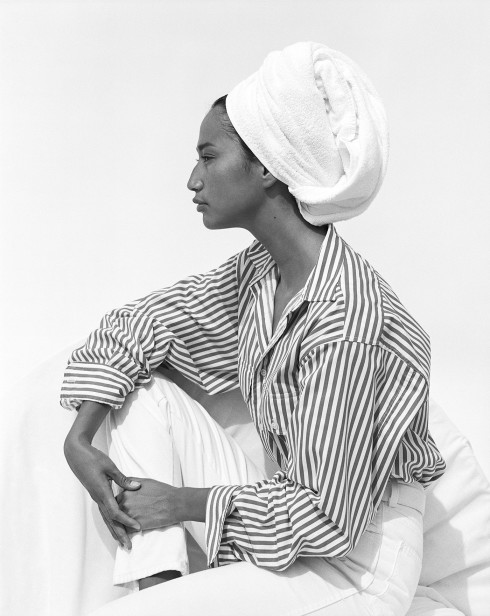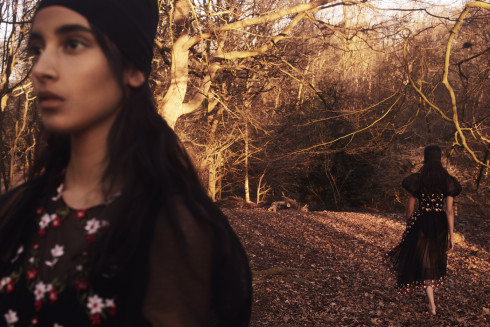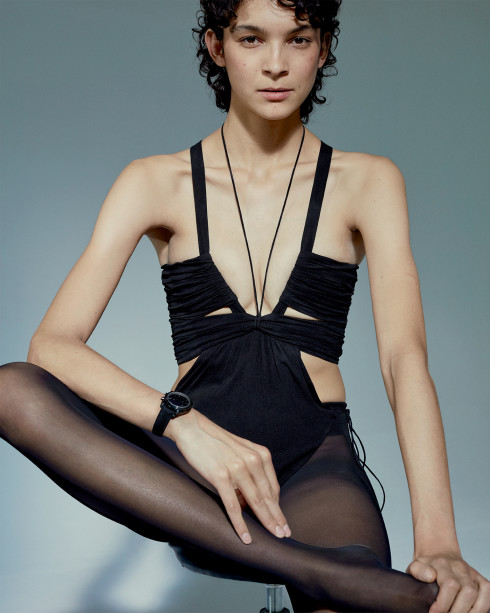
All clothing by Marina Moscone. Earrings and bracelet by Saskia Diez. Necklace, stylist’s own. Ring by Laura Lombardi.
- Photography by
- Sonia Szóstak
- Styling by
- Katelyn Gray
Model: Juliane Grüner at Women Management. Hair by Hikaru Hirano. Makeup by Homa Safar. Photographer’s assistant: Devin Timothy Nelson. Stylist’s assistant: Sharon Chitrit. Production by SJ Ashby and Shannon Segura. Casting by Nicolas Bianciotto at The Art Board.
Women in Charge
Even in an industry as allegedly attuned to the desires of women as fashion, men have overwhelmingly held leadership positions from the very beginning. Over the course of the twentieth century, a number of female designers made their marks, from Jeanne Lanvin and Coco Chanel to Donna Karan and Jil Sander, but, as in most fields, the past few years have been a powerful march towards parity, with women launching namesake brands that offer more than just the promise of a feminine perspective.
Three of these women, Gabriela Hearst, Marina Moscone, and Marine Serre, have each established their labels in their own unique ways, but the common thread between them is an emphasis on slowing down the churn of the seasons, whether that be through upcycling, sustainable materials, or simply an emphasis on clothing that is built to last. Each offers a vision of fashion that is distinctive, provocative, and considered, paving the way for a future that is emphatically female.
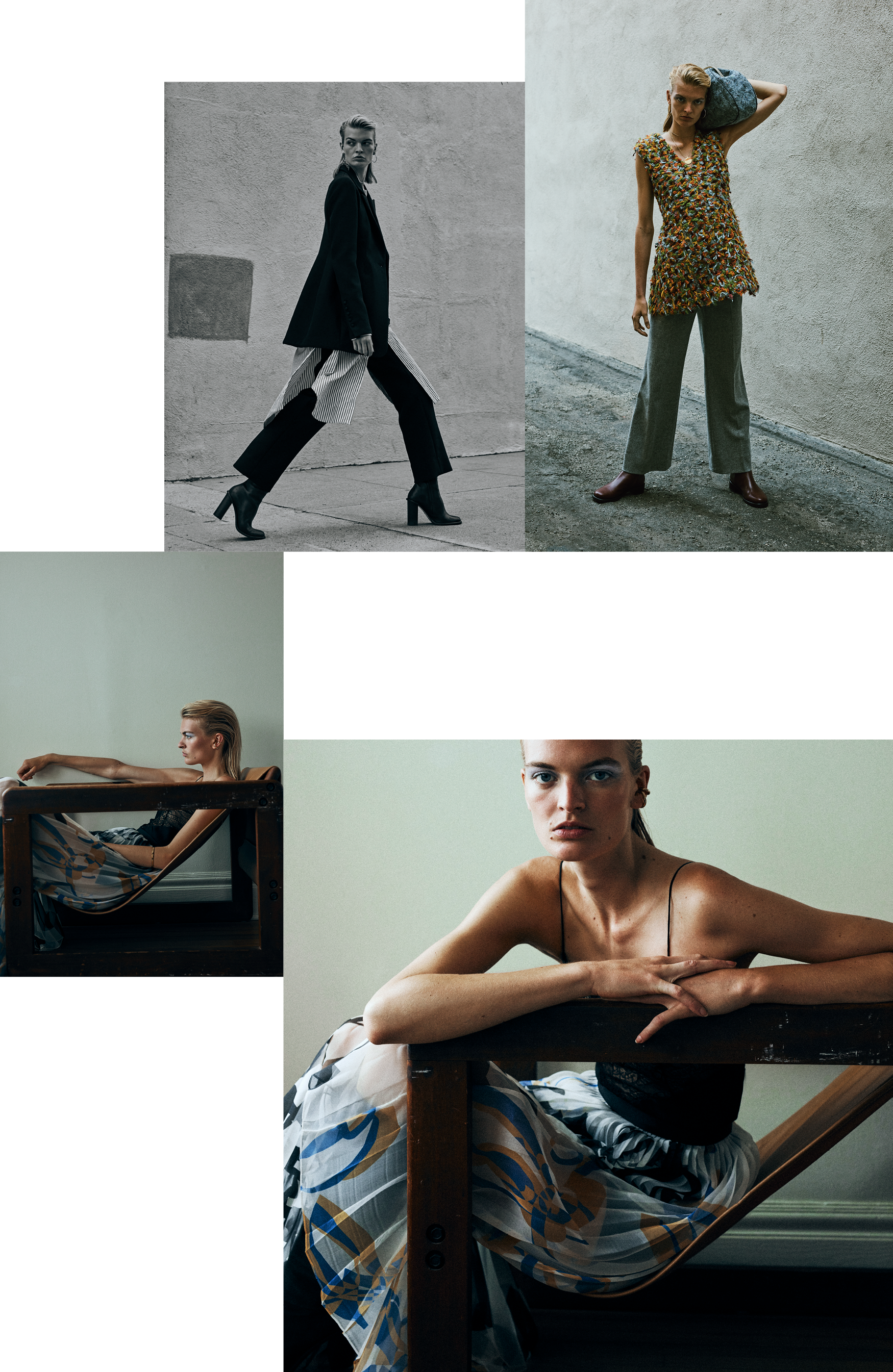
MARINA MOSCONE
When Marina Moscone was three years old, she told her parents she was going to be a fashion designer. When she was seven, she told them she was moving to New York City from her hometown of Vancouver to attend Parsons School of Design. A decade later, she did just that. “Ambitious, yeah,” she laughs. Plus she had “a lot of conviction.”
It’s those qualities—ambition, discipline, anticipation—that brought Moscone to New York in the early years of the millennium. And it’s those qualities that make her believe in the future of her three-year-old eponymous luxury label, despite the fast-paced, expendable culture it’s surrounded by. “I am very much in it for the long haul,” says the designer. “I’m definitely not going anywhere.”
The brand, which is run by Moscone and her sister Francesca, is largely rooted in things that have little to do with modern culture: family heritage, for one. Pulling from her culturally rich upbringing spending summers in her father’s homeland of Italy, Moscone uses traditional Italian tailoring methods to create her designs and develops each of her fabrics in Italian mills that have been owned by the same families there for generations. For the meticulous designer, those processes—and how they came to be—matter. “Everything we do involves the art and the tactility,” she explains. “From the beginning when I conceptualize something and I twist it and I drape it and stitch it to when it’s being produced by hand in the old-school Italian way, these things go from beginning to end in the collection.”
Traditional methods aside, the label speaks very much to the modern woman. Inspired by everything from obscure works of art to the people she spends her time with in her personal life, Moscone designs beautiful pieces of clothing that can be worn both to a black-tie event and to the office without ever feeling over- or underdressed. “I think that’s the way the modern woman wants to dress,” says Moscone, “and I think that’s the way we have to dress. [Modern women do] a wide range of things, so the things you’re wearing need to take you through all of that.”
The modernity of the label also shows in the designs themselves. Collections consist of pieces cut in long, flattering lines; elegantly structured suiting; and opulently textured fabrics, all of which feel cleverly balanced as a whole and are, as Moscone promises, wearable in almost any situation. She explains that her creativity as a designer is heavily influenced by the juxtaposition of her father’s Italian and her mother’s South African heritage, both of which helped her realize her simple appreciation for artful, beautiful things. “Everything was kind of art around us—cooking, traveling, entertaining,” she says. Growing up cross-culturally, she often explored on her own during family travels. “I would say that teaches you to look at the world very artfully and openly and courageously,” she explains. “I suppose that is what led me here in some way.”
After graduating from Parsons during the peak of the economic recession, Moscone got her first job at a photographer and stylist agency, where she began training as an agent and producer. She went on to work as design director for American fashion designer Peter Som for several years, finally launching her label alongside her sister in 2016. Having worked in fashion for so long and in such a wide range of positions, she says she has a well-rounded view of the industry—both as a business and a creative outlet. As a result, while the climate of retail shifts and changes, Moscone is confident in her ability to outlast the storm.
Striving always toward making clothing that is beautiful, well-made from natural fabrics, and built to last, Moscone says each collection is an evolution of the last one, and an evolution of herself. “I think there’s an element of timelessness to that,” she says. “I think there’s an element of sustainability to that. I don’t make clothes that are to be thrown away. I make clothes where you can buy two pieces today and I hope you can buy two pieces in ten years and you can wear them together. By no means is it part of the throwaway culture.” —Anna Jube
GABRIELA HEARST
It’s been over fifteen years since Gabriela Hearst first moved to New York from her native Uruguay, but her homeland still exerts a pull on her visible in every design she produces for her eponymous label, launched in 2015. Raised on her family’s livestock ranch, she developed in her youth an appreciation for a slower and more considered way of life, in stark contrast to the frenetic pace and constant churn of the city she now calls home. For Hearst, that dichotomy asserts itself in the idea of what she calls “honest luxury,” a commitment to creating beautiful, desirable clothing with an emphasis on sourcing, construction, and a wider overall compendium of other ethics and values.
Four years in, the rest of the fashion industry seems to finally be catching up to Hearst, which seems only to have driven her to progress even further. For Fall 2019, she focused on recycled cashmere in lush robes and shirts and used the material to craft cozy coats that mimicked the look and feel of fur. Taking inspiration from the iconic Bolshoi ballerina Maya Plisetskaya, she sent out long, lean outerwear and dresses in calm colors that were difficult to fault. Her clean, elegant designs were a reminder that the opposite of fast fashion is marked not only by quality construction and sustainable choices, but also by an emphasis on timelessness, a refusal to bow to fleeting trends and disposability. Hearst proved once again that her clothes are both designed and made to outlast the change of the seasons.
At her Fall show earlier this year, Hearst invited Kelsey Juliana and the preteen Levi Draheim to sit front row in honor of their roles in a court case against the Trump administration meant to require the government to reduce carbon dioxide levels in order to protect our youth’s future. It was another reminder that, in many ways, the world is starting to look a little bit more and more like the one Hearst envisions. In a society where nearly every decision has to be considered in its larger political and social context and virtue signaling is becoming rampant, she is a steady pioneer quietly nudging us to do the right thing, both for ourselves and the world at large. —Jonathan Shia
MARINE SERRE
It’s not every young designer who can establish her own distinctive visual vocabulary in just a few short years, but that is exactly what Marine Serre has accomplished since graduating from Brussels’s famed La Cambre school in 2016. Her sharply curved crescent moon, with its allusions to fantasy, exploration, and, somewhat controversially, Islam, now appears speckled across her bodysuits, scarves, chunky heels, and other designs and is coming to denote her work as clearly as the double G does Gucci.
Since winning the LVMH Prize in 2017—largely on the strength of her graduate collection, which she named “Radical Call for Love” and was sold at the Broken Arm in Paris—Serre has been in nonstop ascent. While continuing to work for Balenciaga, she made her Paris Fashion Week début the following February and has earned famous fans including Beyoncé and Dua Lipa. Nearly half of her Spring 2019 designs were crafted from upcycled fabrics, and her latest collection for Fall tackles environmental devastation head on, envisioning a world of searing drought, endless conflict, and few survivors. With sturdy leather coats, sculpted puffer jackets, and flowing patchwork dresses in a riot of neon hues and electric plaids, she presents an aggressive, confrontational, and threatening look at where we are headed in designs that take charge and refuse to let go. It is, if not entirely sinister, at least resonantly bleak and distressing.
Overconsumption and waste are baked into the architecture of the fashion industry, whose survival depends on convincing buyers to replace last year’s white shirt with this year’s, but Serre is part of a young generation trying to find alternatives. Last year, she restructured her collection into four constituent parts, the White, Gold, Red, and Green Lines, devoted to core pieces, experimental designs, couture, and upcycling, respectively. In this way, the 27-year-old Frenchwoman is interrogating the very definition of fashion itself, proving herself as adept with one-off red-carpet dresses as she is with reinvented basics, all unified through her fascinatingly idiosyncratic æsthetic. —Jonathan Shia
See this full story and many more in print by ordering your copy of the Fall 2019 issue here.
- Photography by
- Sonia Szóstak
- Styling by
- Katelyn Gray
Model: Juliane Grüner at Women Management. Hair by Hikaru Hirano. Makeup by Homa Safar. Photographer’s assistant: Devin Timothy Nelson. Stylist’s assistant: Sharon Chitrit. Production by SJ Ashby and Shannon Segura. Casting by Nicolas Bianciotto at The Art Board.
